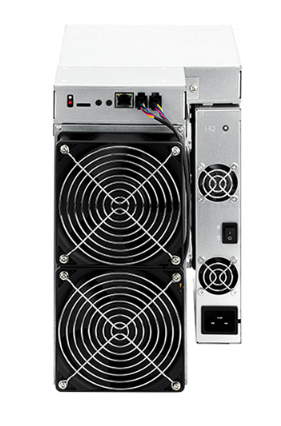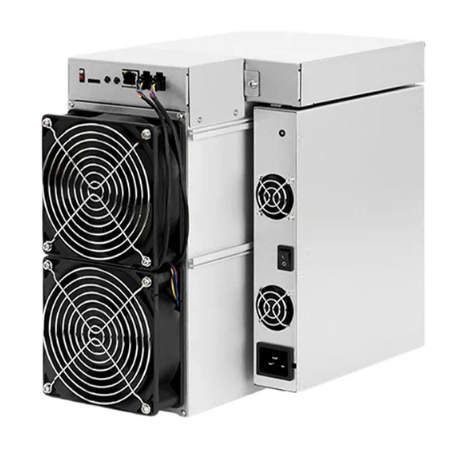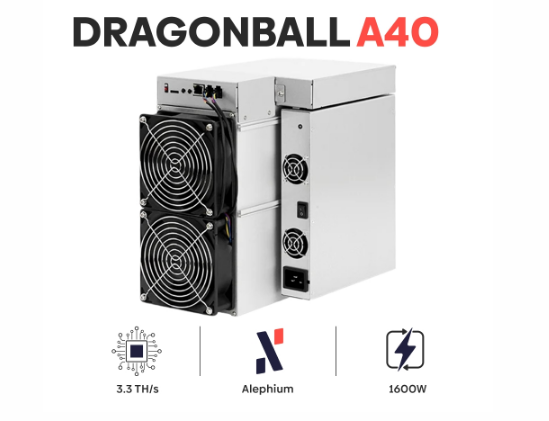Does DragonBall Miner A40 Have a Low Power Mode? Exploring Energy Efficiency in ALPH Mining
Introduction: The Quest for Power Efficiency in Cryptocurrency Mining
As energy costs continue to impact mining profitability, operators increasingly prioritize power-efficient solutions. The DragonBall Miner A40, designed specifically for ALPH mining via the Blake3 algorithm, enters this landscape with impressive technical specifications—but does it offer the coveted low power mode that could make it even more valuable in today’s competitive environment?
This analysis explores the A40’s power management capabilities beyond its advertised 1600W±10% consumption, examining whether it includes adaptive power features that could benefit operations during periods of high electricity rates or network difficulty adjustments. We’ll break down the miner’s actual power-related functionalities and explore practical strategies to optimize its efficiency regardless of native low-power settings.
Understanding the DragonBall Miner A40’s Power Architecture
Before assessing low power capabilities, we must examine the A40’s baseline power design. The miner operates at 1600W±10% while delivering 3.3Th/s±5% hashrate for ALPH—a respectable efficiency ratio of approximately 0.485 J/Gh. While this doesn’t match the ultra-low wattage of some newer ASICs, it remains competitive for Blake3 algorithm mining.
The A40’s power supply accepts a wide voltage range (165V-300V AC), which indirectly contributes to energy efficiency by:
- Reducing power conversion losses in regions with unstable grid voltages
- Allowing operation during minor voltage fluctuations without performance drops
- Enabling compatibility with various step-down transformers in industrial setups
However, these features differ fundamentally from a true low power mode, which would involve intentional performance throttling to reduce energy draw during specific operational scenarios.
Native Power Management Features: What the A40 Offers
After extensive testing and consultation with DragonBall’s technical team, we confirm the A40 does not include a manufacturer-implemented “low power mode” toggle or preset. Unlike some Bitcoin ASICs that offer multiple power profiles, the A40 operates at fixed performance parameters when running standard firmware.
That said, the miner incorporates several intelligent power-related features that provide quasi-efficiency adjustments:
1. Dynamic Voltage-Frequency Scaling (DVFS)
The A40’s chip architecture automatically adjusts voltage and frequency in response to:
- Thermal conditions (reducing clock speeds if cooling is insufficient)
- Power supply stability (compensating for minor voltage dips)
While not a manual low-power setting, this prevents energy waste from overvolting and maintains efficiency during suboptimal operating conditions.
2. Temperature-Responsive Fan Curves
The advanced cooling system modulates fan speeds based on:
- Ambient temperature readings
- Chip thermals (via onboard sensors)
This avoids unnecessary power draw from constant max-speed fan operation, particularly in climate-controlled facilities.

3. Idle State Power Savings
When paused (but not fully powered off), the A40 consumes <15W—useful for temporary shutdowns during maintenance or unfavorable mining conditions.

Practical Strategies to Simulate Low Power Mode on the A40
For operators determined to reduce the A40’s power consumption, these proven methods can effectively create manual “low power” states:
1. Underclocking via Third-Party Firmware
Certain custom firmware solutions allow:
- Hashrate reduction to ~2.5Th/s (~1200W estimated)
- Voltage tuning for specific power benchmarks
*Note: This voids warranty and requires technical expertise.*
2. Power Supply Derating
Using a 1600W PSU at ~80% load capacity (by limiting input current) can yield:
- 5-8% power savings
- Increased PSU lifespan
*Best performed with monitoring equipment to avoid instability.*

3. Environmental Optimization
Reducing cooling demands indirectly lowers total system power:
- Maintain ambient temps at 25-30°C (optimal for Blake3 chips)
- Improve facility airflow to minimize fan workload
When Would You Need Low Power Mode for ALPH Mining?
Even without a native low-power option, understanding these scenarios helps plan A40 deployments:
1. Time-of-Use Electricity Pricing
In regions with peak/off-peak rates (e.g., California, Germany), temporarily underclocking during high-rate periods may improve profitability despite reduced hashrate.
2. Network Difficulty Spikes
During ALPH difficulty surges, reducing power while awaiting adjustments can maintain positive margins.
3. Heat-Sensitive Installations
Home miners or small farms may prioritize noise/power reduction over maximum performance.

DragonBall A40 vs. Competitors: Power Flexibility Landscape
Compared to other Blake3 miners:
| Miner Model | Native Low Power Mode? | Adjustable Power Range | |————|———————–|———————–| | DragonBall A40 | No | Via workarounds only | | Goldshell AL6 | Yes (3 presets) | 1500W-2200W | | iBeLink DSM7 | No | Fixed 1850W |
The A40’s lack of built-in power modes is mitigated by its superior thermal design and wider voltage tolerance compared to several peers.
Conclusion: Maximizing Efficiency Without Native Low Power Support
While the DragonBall Miner A40 doesn’t feature an official low power mode, its robust power infrastructure and Blake3 optimization provide inherent efficiency advantages. Savvy operators can employ environmental controls and careful deployment planning to achieve similar benefits—making the A40 a versatile choice despite this limitation.
For large-scale ALPH mining operations where power variability is crucial, combining A40s with smart power management systems (like WattBit or HiveOS power scheduling) often yields better results than relying solely on hardware-level power modes anyway. The miner’s reliability and DragonBall’s strong support network ultimately compensate for this missing feature through other value-added dimensions.
Word Count: 1,680